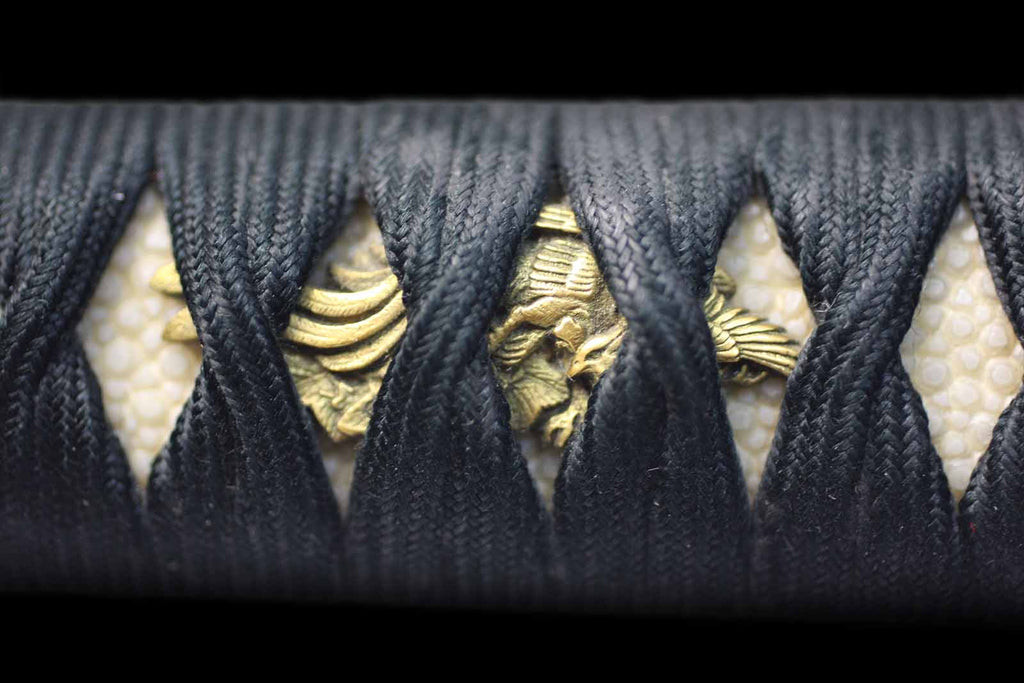In Japanese, a main street, busy street, or a downtown area is called a menuki-dori. The origin of this word is derived from menuki, which are attached to the hilt of a Japanese sword. According to one theory, menuki are so named because it is the most gorgeous and conspicuous of all sword fittings. But what is the role of the menuki really?

The Role of Menuki
The Japanese sword blade has a hole called a mekugi-ana in the nakago or (tang). This hole is used to fasten the blade to the hilt so that it will slide out. A bamboo pin called mekugi is wedged in the hole to secure the hilt to the blade.
Until the early Muromachi period (1336-1573), the menuki was an integral part of the mekugi and was a metal fixture that held the hilt and sword blade together, but as time went by, the mekugi became a consumable item made of bamboo, and the menugi was separated from the mekugi. Over time, mekugi and menuki thus became separated, and menuki became used as a non-slip device for a better grip while holding the sword with two hands. When gripping the handle, the fingers can use the menuki for this extra grip. Menuki has not only a decorative role but also a rational purpose.

Menuki are formed by pounding sheet metal such as copper, and then delicately carving or inlaying the metal further. There are various motifs used, and as they are crafted so ornately for use on focal point on swords, they are also art pieces in their own right.
Position of Menuki
There are three main positions for menuki.
Jun-menuki (standard position menuki)

The most common position of menuki is on the front side of the sword near the tsuba and on the back side of the sword near the tsuka-gashira, which is also called jun-menuki. In this condition, when the right-hand grips the handle of the sword, the fingertips just touch the menuki.
Gyaku-menuki (reverse position menuki)

This is a reverse of the standard arrangement of menuki often seen on Yagyu Koshirae. This means that the menuki is placed in the palm of the hand when the right-hand grips the handle. This arrangement of menuki is specifically used in Yagyu Shinkage-ryu, and one theory is that this structure was adopted due to an emphasis on maneuverability while wielding the sword one-handed.
Chu-o Menuki (center position menuki)

Some people find it difficult to grip the handle due to the presence of menuki, but in such cases, there is a way to place the menuki so that it does not touch the hands at all when gripped. In this case, the menuki are placed in the center of the handle on either side. If it is uncomfortable trying both jun-menuki and gyaku-menuki, this may be the position for you.
Thus, we can see that although menuki is small in size among sword ornaments, they play an important role and are more than just simple decorations.

Leave a comment: